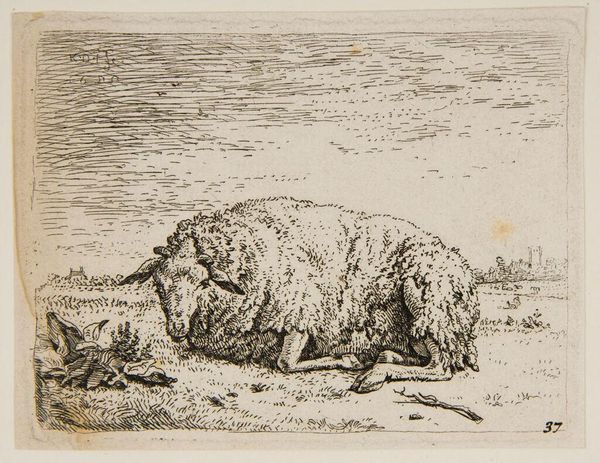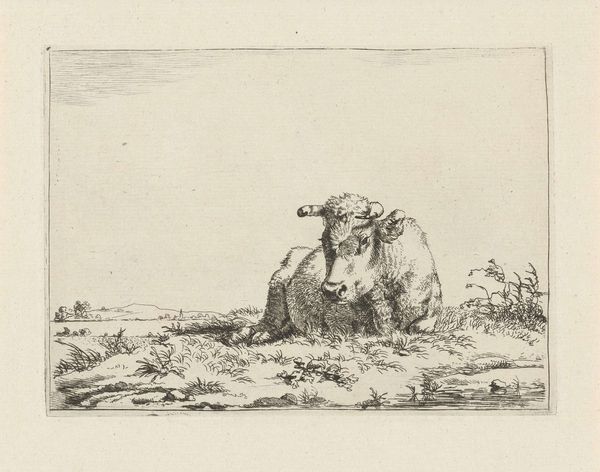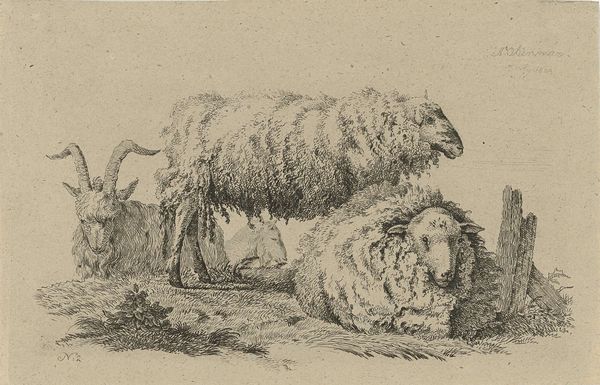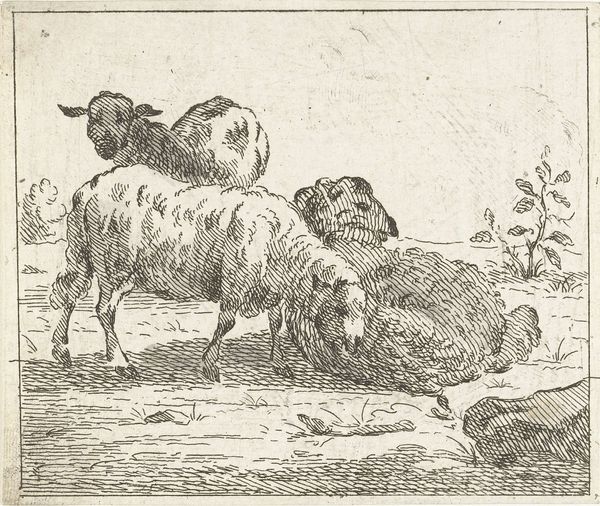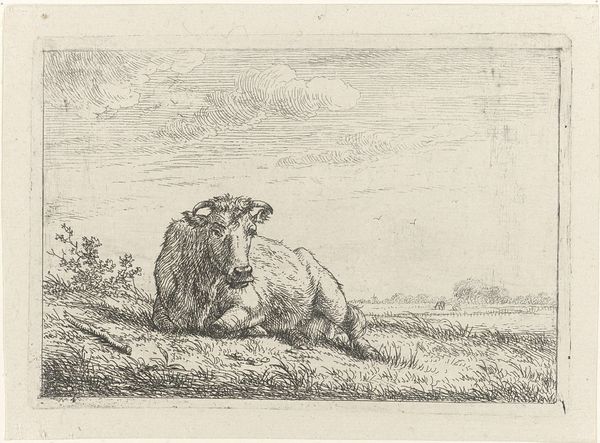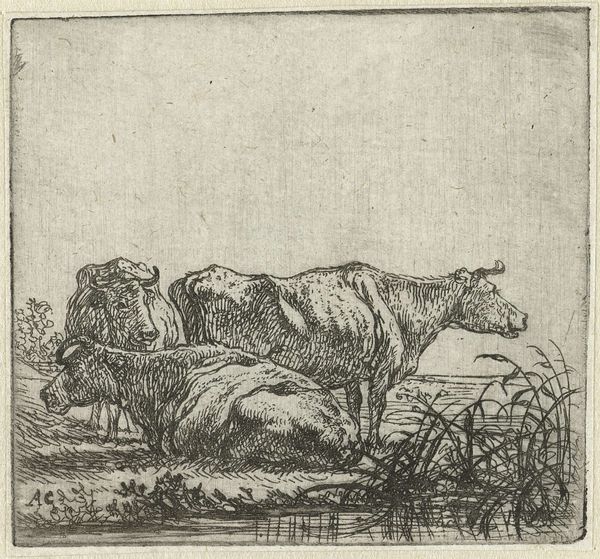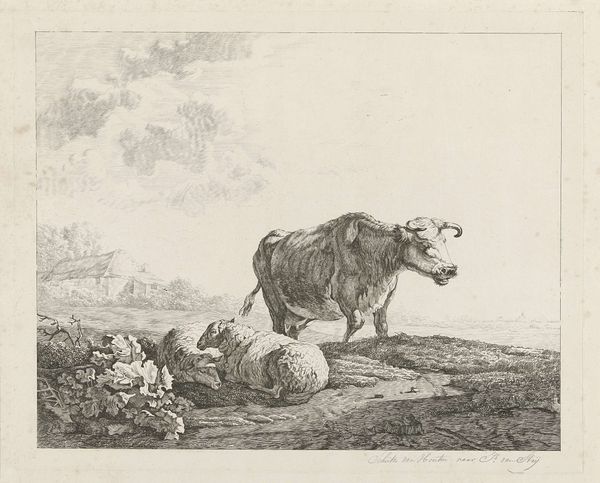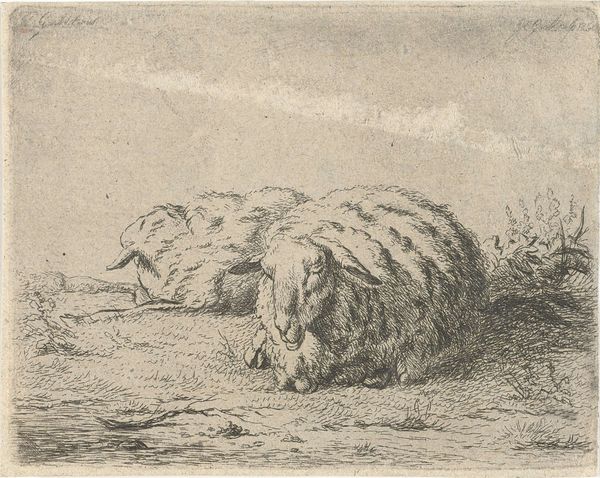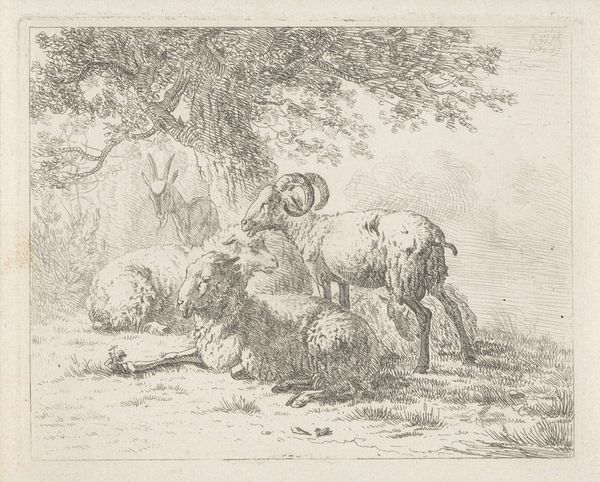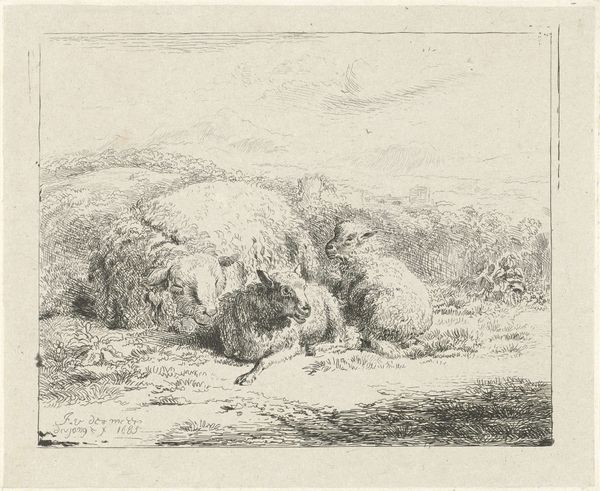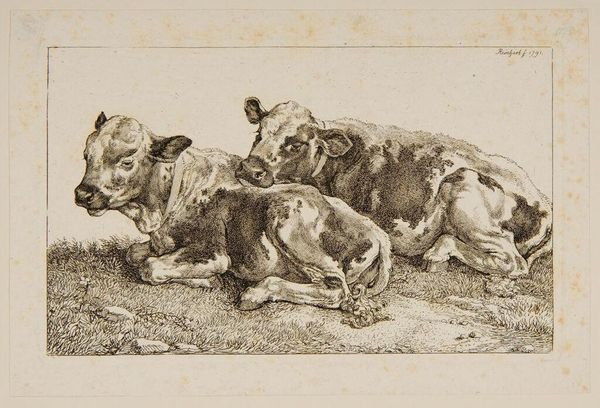
drawing, paper, ink
#
drawing
#
animal
#
landscape
#
paper
#
ink
#
genre-painting
#
realism
Dimensions: height 55 mm, width 103 mm
Copyright: Rijks Museum: Open Domain
Curator: Looking at this lovely ink drawing, I feel a profound sense of tranquility. The softness of the sheep’s wool practically radiates off the page. Editor: Yes, it’s undeniably peaceful. Let’s situate this within its context. The artwork is "Drie schapen liggend in het gras," or "Three Sheep Lying in the Grass," created by Frédéric Theodore Faber in 1805. It resides here at the Rijksmuseum. What draws you to it? Curator: Well, I see a lot of themes coming to the fore, like the intersection between humanity, agriculture, and labor in the pre-industrial age, even though human figures are absent. It also hints at the exploitation and commodification of animals under emerging capitalist systems. Do you get a sense of the changing economic landscape from this drawing, even so indirectly? Editor: It’s fascinating you see that socio-economic commentary here. My immediate reaction is to think about the public's shifting relationship with the natural world as the countryside became an increasingly sentimentalized place during the 19th century. The burgeoning cities fueled a need for idyllic representations of rural life. Do you think Faber’s work contributed to that cultural shift? Curator: Certainly, and the romanticized depiction could gloss over the realities of agricultural labor. Art like this might inadvertently obscure issues of rural poverty and land enclosure that affected many farmers. I think the popularity of such genre-paintings is directly correlated with that need. Editor: I think that’s definitely fair. Considering the museum’s role, this piece raises questions about how we curate and present rural life in art, potentially perpetuating a sanitized version of history. It speaks volumes about whose stories are centered and how that shapes public perception. Curator: Precisely. The gaze through which art portrays these animals is vital to understanding their cultural meaning, wouldn't you say? I appreciate how the minimalist execution encourages viewers to project meaning onto this subject and question what these artistic representations serve. Editor: A perspective I appreciate! It seems Faber’s "Three Sheep Lying in the Grass," manages to open conversations around societal structure and even museum curation. Curator: A dialogue between rural aestheticism, the socio-political landscape of labor, and even humanity’s treatment of animals! Thank you.
Comments
No comments
Be the first to comment and join the conversation on the ultimate creative platform.

